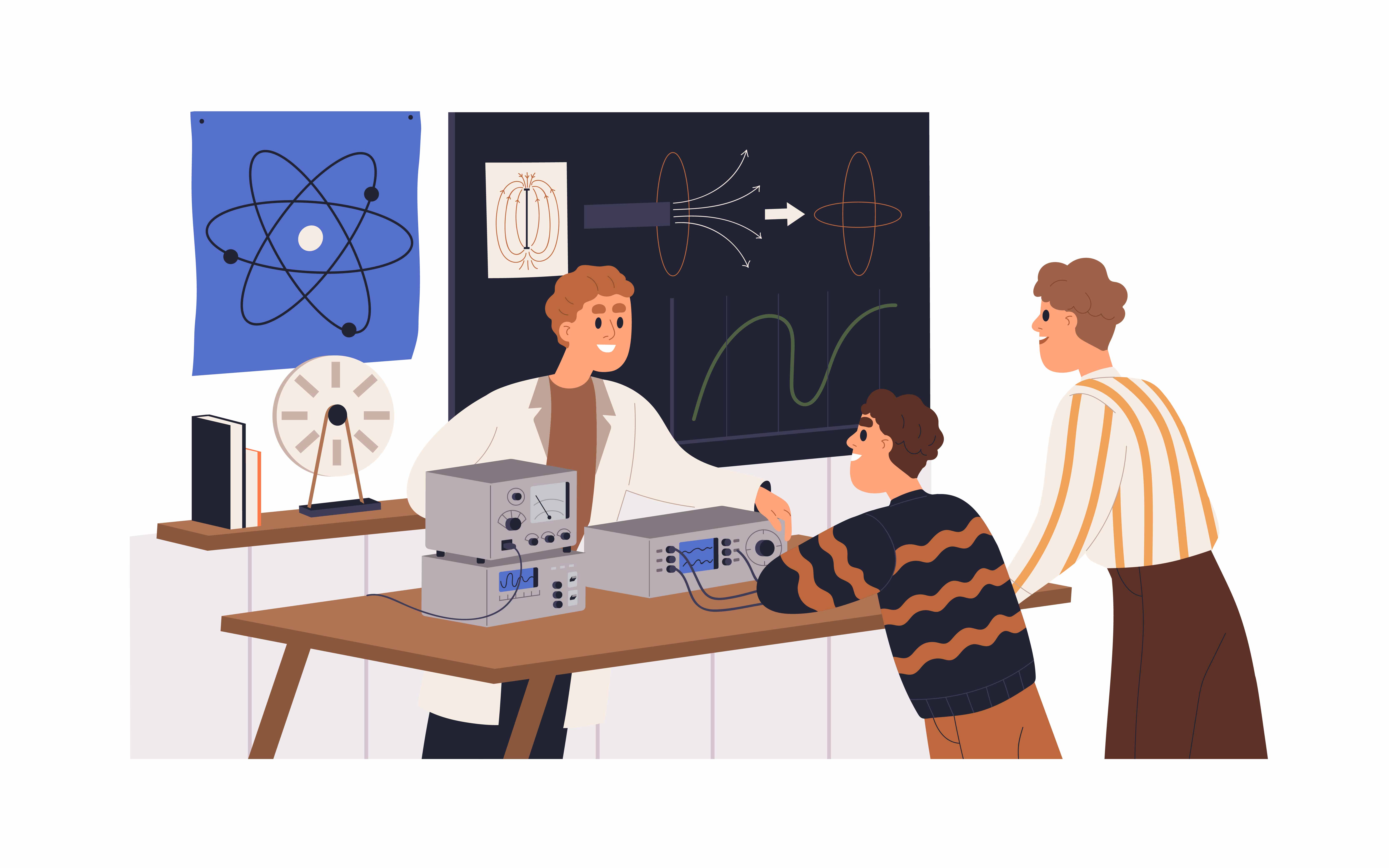The world is in a new age of change and challenge with developments in technology, climate change, and available resources. Demands for further consideration on renewable energy options are rising, and with it comes a returning interest in nuclear energy. We can see the resurgence of nuclear energy in Versant Physics’ own home state: the Palisades Nuclear Power Plant, which stopped commercial operation in 2022, is being restored through a collaborative effort of Siemens Energy and Holtec International.1
These two companies aim to enhance safety, reliability, and efficiency through their efforts to modernize and renew the Palisades to generate more than 800 megawatts (MW) of electricity.2 The goal for this energy is to power around 800,000 households. Other major companies are pursuing similar restoration projects across the United States for different reasons. Let’s explore the history of nuclear energy, its fall out of favor, and why we’re seeing attention returning to the power source.
The Rise in Nuclear Reactor Development
The first technologies for nuclear reactors and creating nuclear energy came about in the 1930s and 1940s. Its potential as a clean energy source, however, was overshadowed by government demand for nuclear bomb research for World War II. It was not until the war came to an end that a renewed focus on nuclear energy could occur. The sheer capacity of nuclear power had been demonstrated in some of the most devastating ways, but a determination to harness it for good by way of creating steam and electricity rose in the 1950s.3
The first nuclear reactor to ever produce electricity was a small reactor created in the United States by Argonne National Laboratory in 1951. Seeing the rise in potential for power generation, President Eisenhower proposed an “Atoms for Peace” program in 1953. This reoriented research effort contributed significantly towards electricity generation and inspired civil nuclear energy development in the USA. Great progress within the United States and the rest of the world continued throughout the 1950s with the creation of new reactor designs. These included fast breeder reactors (FBRs), which produce more fissile materials than they consume and are designed to extend nuclear fuel supply to generate electricity, as well as pressurized water reactors (PWRs), a reactor originally designed for the U.S. Navy that uses pressurized water as a coolant and neutron moderator.4,5
Commercial nuclear energy reactors started appearing in 1959 in France, quickly followed by the U.S., the United Kingdom, and Russia across the 1960s. Many of these reactors were light water designs (either PWRs or boiling water reactors, BWRs) and some could generate up to 250 MW of energy. Within the early 1970s, the world saw its first high-power channel reactors that could generate 1,000 MW of energy.3 Despite these rapid developments of increasing energy outputs, the demand for this new source of power was short lived.
Why the Quick Decline to Nuclear Energy Interest?
Just as nuclear energy orders started coming in during the 1960s, the United States and other countries creating nuclear power plants began to see a decline just as quickly in the 1970s and through the rest of the 20th century. This was due to unresolved concerns about the latest world war and unforeseen incidents in the future.
The Anti-Nuclear Movement and the Energy Crisis of the 1970s
Within the midst of the Cold War where the world’s superpowers were locked in their nuclear arms race, animosity towards nuclear products spread throughout the public perspective. Local and national protests grew against the use of any nuclear weaponry or power plants due to the proven potential for destruction from World War II and the looming threat created by the Cold War.6 Producers of these plants were forced to bring production to a slowdown as previous orders from the 1960s were cancelled and interest in any new requests waned.3
In 1973 during the Yom Kippur War, the Arabian state members of the Organization of Petroleum Exporting Countries (OPEC) initiated an embargo on oil exports to the U.S. This created the oil crisis from 1973 which caused the U.S. government to scramble for alternative energy sources. This led to nuclear energy coming back on the table as an option for power, but concerns surrounding the consequences of power plants had only worsened. Within the U.S., many Americans were against storage of radioactive material and waste generated from the nuclear power plants. Protests cited potential danger to the health of residents living near the sites and the negative environmental impact if any waste leaked out of containment.6
The Chernobyl, Three Miles Island, and The Fukushima Disaster Incidents
After the rise of the Anti-Nuclear Movement, incidents relating to established nuclear power plants began to occur. The first recorded nuclear power plant incident happened in 1979 at the Three Mile Island nuclear power plant in the USA. Due to a cooling malfunction, part of the core in Unit 2 of the plant melted, destroying the reactor. Although there were no injuries or adverse health effects from the event, the event caused widespread confusion and concern about the impact of the incident.7
The Chernobyl disaster occurred in 1986 and is notably the worst incident to have occurred in history. This nuclear power plant is in Chernobyl, Ukraine, and a sudden surge of power during a reactor systems test destroyed Unit 4 of the station. Investigation of the incident determined that a lack of proper safety culture caused the devastation at the Chernobyl power plant8. Many site workers were killed or had acute radiation sickness.9

These incidents only heightened anti-nuclear movements in the end of the 20th century. Due to the strong reluctance towards increasing nuclear energy production, new facilities were rare into the early 2000s. The Fukushima Daiichi accident of 2011, in which an unprecedented natural disaster hit Japan and overpowered the outdated tsunami countermeasures of the Daiichi site, continued to incite trepidation towards the safety of nuclear power plants.10 The world is seeing more alternative energy sources in response to climate change, but through solar, wind, and geothermal routes. Nuclear energy produces only 9% of the world’s electricity as of 2025,11 but things may change soon. After over a decade without serious troubles, eyes are returning to nuclear energy as power for new technologies.
Nuclear Energy’s New Appeal
One of the biggest technological advancements that the world is adapting to is the rise in artificial intelligence (AI). Companies across the globe are implementing their own AI systems that require very large, energy demanding data centers to function. For one request to ChatGPT, the International Energy Agency (IEA) has determined that the response the AI provides requires ten times more electricity than someone completing a Google search.12 Current power grids are struggling to keep up with the demands of artificial intelligence. In response, companies creating AI who need to maintain these data centers are casting attention towards untapped nuclear energy sources.
Who are some of the big names looking to harness nuclear energy?
One of the first deals made that suggested a reemergence of nuclear energy was in September of 2024. The tech giant Microsoft signed an agreement with Constellation Energy to restart the Unit 1 nuclear reactor at the Three Mile Island plant in Pennsylvania.13 Once the site is up and running, Microsoft hopes to have 835 megawatts (MW) of new power they can dedicate to their data centers. Whether this $1.6 billion deal is worth its steep price tag depends on time—the Three Mile Island plant originally closed in 2019 due to economic challenges. Now, Microsoft faces getting the nuclear reactors back into working order, renewing its operating licenses, and starting operations again by 2028.13
The social media and technology giant, Meta, aims to take a similar approach to Microsoft for their AI power needs. By partnering with Constellation Energy, Meta hopes to access 1,121 MW of nuclear energy through an established Illinois nuclear facility. This will bolster the electricity needs for Meta to continue its AI developments. They hope to increase data centers and important hubs for tasks like “AI model training, content delivery, and cloud services”.14
While Microsoft and Meta will be taking advantage of established nuclear power plants, Google and Amazon are approaching their move into nuclear energy differently. These companies are looking to invest in the creation of small modular reactors (SMRs). This type of plant currently doesn’t operate anywhere in the United States and only a few exist in the world. SMRs produce less than 300 MW per reactor. Amazon has made a deal with X-Energy, a company capable of designing “high-temperature gas reactors,” and Energy Northwest. They aim to create four reactor modules that would provide at least 320 MW combined.14 Meanwhile, Google has moved into an agreement with Kairos, a company that develops “molten salt-cooled, TRISO fuel-powered” reactors. The goal of power production from these future SMRs for Google would be 500 MW by 2035.14
Will nuclear energy be the long-term solution for AI needs?
The unexpected energy demand for artificial intelligence is driving these trillion-dollar companies to invest in nuclear energy potential, but will this be a long-term investment? Some suggest that the eventual solution to this power-hungry technology will be the technology itself. Artificial intelligence is continuously growing, being trained to learn more and do more. Some believe that AI algorithms will eventually become the best path to determining its own energy management. This would be achievable through its capacity to “identify patterns in data, detect anomalies, and anticipate and forecast future results”.12
Given enough time to “self-reflect”, AI could determine how to optimize its own functioning to reduce its carbon footprint and power necessary to be sustained. In the meantime, nuclear power plants will be giving these tech giants an opportunity to obtain the energy they need. With the increasing pressure of honoring climate commitments and lowering greenhouse gases, they may also find that nuclear energy suits more than just their AI needs.
Conclusion
Nuclear energy is still an industry that is seen first for the disastrous events from the past and their repercussions. Power plants are considered as hazardous potential for nuclear waste leaks, core meltdowns, and a threat for radiation exposure to those who live nearby. However, as the need for cleaner energy increases in demand, we may find that nuclear is an option to reconsider.
Handling of radiation and nuclear power has improved over recent decades. Now more than ever, safety concerns are taken seriously to avoid repetitions of historical incidents. With investments from large companies like Microsoft and Meta, the resurgence of nuclear energy could provide a path to expanded opportunities of clean power provision for more than just AI data centers. By focusing on safety, responsible handling, and sustainability as core features of future nuclear power plants, perhaps the true potential for nuclear energy will be revealed.
Sources
- Palisades Nuclear Power Plant. Siemens-energy.com. Published 2025. Accessed October 30, 2025. https://www.siemens-energy.com/global/en/home/references/recommissioning-palisades-nuclear.html
- Davidson K. Palisades Nuclear Plant on Lake Michigan shoreline one step closer to reopening • Michigan Advance. Michigan Advance. Published July 25, 2025. Accessed October 30, 2025. https://michiganadvance.com/briefs/palisades-nuclear-plant-on-lake-michigan-shoreline-one-step-closer-to-reopening/
- World Nuclear Association. Outline History of Nuclear Energy. world-nuclear.org. Published May 2, 2024. https://world-nuclear.org/information-library/current-and-future-generation/outline-history-of-nuclear-energy
- Breeder reactor – Energy Education. Energyeducation.ca. Published 2017. https://energyeducation.ca/encyclopedia/Breeder_reactor
- World Nuclear Association. Nuclear Power Reactors. world-nuclear.org. Published January 23, 2025. https://world-nuclear.org/information-library/nuclear-fuel-cycle/nuclear-power-reactors/nuclear-power-reactors
- Antinuclear movement of the 1970s | EBSCO. EBSCO Information Services, Inc. | www.ebsco.com. Published 2022. https://www.ebsco.com/research-starters/history/antinuclear-movement-1970s
- World Nuclear Association. Three Mile Island Accident – World Nuclear Association. world nuclear association. Published October 11, 2022. https://world-nuclear.org/information-library/safety-and-security/safety-of-plants/three-mile-island-accident
- World Nuclear Association. Sequence of Events – Chernobyl Accident Appendix 1 – World Nuclear Association. World-nuclear.org. Published 2022. https://world-nuclear.org/information-library/appendices/chernobyl-accident-appendix-1-sequence-of-events
- Backgrounder on Chernobyl Nuclear Power Plant Accident. NRC Web. Published 2015. https://www.nrc.gov/reading-rm/doc-collections/fact-sheets/chernobyl-bg
- World Nuclear Association. Fukushima Daiichi Accident. world-nuclear.org. Published April 29, 2024. https://world-nuclear.org/information-library/safety-and-security/safety-of-plants/fukushima-daiichi-accident
- Nuclear Power Reactors – World Nuclear Association. world-nuclear.org. https://world-nuclear.org/information-library/nuclear-fuel-cycle/nuclear-power-reactors/nuclear-power-reactors#how-does-a-nuclear-reactor-work
- United Nations. Artificial intelligence: How much energy does AI use? United Nations Western Europe. Published April 7, 2025. https://unric.org/en/artificial-intelligence-how-much-energy-does-ai-use/
- Moseman A. How to Restart a Nuclear Reactor. IEEE Spectrum. Published October 2, 2024. https://spectrum.ieee.org/three-mile-island
- Wolinski SJ. AI’s Energy Demands and Nuclear’s Uncertain Future | GJIA. Georgetown Journal of International Affairs. Published April 16, 2025. https://gjia.georgetown.edu/2025/04/16/ais-energy-demands-and-nuclears-uncertain-future/











